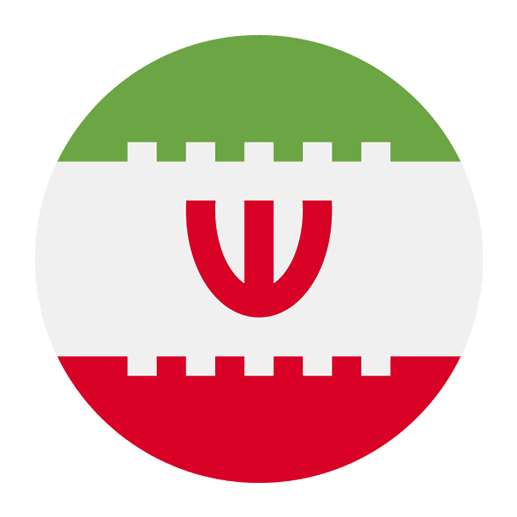Persian children’s literature is a treasure trove of stories, poems, and educational materials that can be a fantastic resource for young learners. The rich cultural heritage of Persia, now modern-day Iran, is reflected in its literature, which dates back centuries and includes an array of genres and styles. Incorporating Persian children’s literature into the learning curriculum can offer numerous benefits, from enhancing language skills to fostering cultural awareness.
Why Persian Children’s Literature?
The Persian language, Farsi, is spoken by millions of people around the world. Learning Farsi through children’s literature offers a unique and engaging way for young learners to immerse themselves in the language. Here are some compelling reasons to consider Persian children’s literature as a learning resource:
1. **Cultural Immersion**: Children’s stories from Persian literature often reflect the values, traditions, and social norms of Persian culture. This provides young learners with a deeper understanding of the cultural context in which the language is used.
2. **Language Skills Development**: Stories, poems, and rhymes in Persian can help young learners develop their vocabulary, grammar, and pronunciation. The repetitive and rhythmic nature of children’s literature makes it easier for children to remember new words and phrases.
3. **Moral and Ethical Lessons**: Persian children’s literature often contains moral and ethical lessons, teaching children about kindness, honesty, and perseverance. These stories can help young learners develop a sense of empathy and ethical reasoning.
4. **Engagement and Interest**: The colorful illustrations and imaginative stories found in Persian children’s books can capture the interest of young learners, making language learning a fun and enjoyable experience.
Popular Persian Children’s Literature
Persian children’s literature is rich and varied, with many beloved stories and characters. Here are some popular examples:
The Shahnameh (The Book of Kings)
The Shahnameh, written by the Persian poet Ferdowsi, is one of the most important works of Persian literature. Although it is not exclusively a children’s book, many stories from the Shahnameh have been adapted for young readers. The tales of heroic deeds, mythical creatures, and historical events can captivate the imagination of children while introducing them to Persian history and mythology.
The Little Black Fish
“The Little Black Fish” by Samad Behrangi is a classic Persian children’s story that has been translated into many languages. The story follows the journey of a small black fish who dares to venture beyond the confines of its small pond to explore the wider world. The tale is a beautiful allegory about courage, curiosity, and the quest for knowledge.
The City of Cats
Written by the acclaimed Iranian author Mohammad Ali Jamalzadeh, “The City of Cats” is a delightful story about a city inhabited entirely by cats. The narrative is both whimsical and thought-provoking, offering insights into human behavior and social structures through the lens of feline characters.
The Tales of Kelileh and Demneh
“The Tales of Kelileh and Demneh” is a collection of fables that originated in ancient India but were later translated into Persian. The stories, which feature animals as protagonists, convey moral lessons and practical wisdom. These fables are an excellent way to introduce children to Persian literature while teaching important life lessons.
The Parrot and the Merchant
This story, penned by the famous Persian poet Rumi, is a part of his larger work, the “Masnavi”. It tells the tale of a merchant who keeps a parrot in a cage and the lessons he learns about freedom and compassion. The story’s poetic language and deep philosophical messages make it a wonderful resource for young learners.
Using Persian Children’s Literature in the Classroom
Incorporating Persian children’s literature into the classroom can be a rewarding experience for both teachers and students. Here are some strategies to effectively use these resources:
Read Aloud Sessions
Reading aloud to children is a powerful way to enhance their language skills. Choose stories with engaging plots and colorful illustrations to capture the students’ interest. As you read, encourage children to ask questions and discuss the story. This not only improves their comprehension but also helps them practice speaking and listening skills.
Storytelling and Dramatization
Storytelling and dramatization are effective techniques to make literature come alive for children. Have students act out scenes from the stories or retell the tales in their own words. This encourages creativity and helps reinforce their understanding of the language and the story’s themes.
Interactive Activities
Incorporate interactive activities such as drawing, coloring, and crafting related to the stories. For example, students can draw their favorite scenes or characters from the story, or create masks and costumes for a dramatization. These activities make learning more engaging and memorable.
Language Exercises
Use the stories as a basis for language exercises. Create vocabulary lists, comprehension questions, and grammar activities based on the text. This helps reinforce language concepts and allows students to apply what they have learned in a meaningful context.
Cultural Discussions
Use the stories as a starting point for discussions about Persian culture and traditions. This can include topics such as Persian New Year (Nowruz), traditional foods, clothing, and festivals. These discussions help broaden students’ cultural horizons and foster a greater appreciation for diversity.
Resources for Finding Persian Children’s Literature
There are several resources available for finding Persian children’s literature, both in print and online. Here are some recommendations:
Libraries and Bookstores
Many libraries and bookstores carry a selection of Persian children’s books. Look for sections dedicated to world literature or children’s literature. Librarians and bookstore staff can often provide recommendations and help you find specific titles.
Online Bookstores
Online bookstores such as Amazon and Book Depository offer a wide range of Persian children’s books. You can search for specific titles or browse through categories to find books that suit your needs. Many online bookstores also provide customer reviews and ratings, which can help you make informed choices.
Educational Websites
There are several educational websites that offer Persian children’s literature, often with accompanying audio recordings and interactive activities. Websites such as “Ketab Farsi” and “Iranian Children’s Books” provide access to a variety of stories, poems, and educational materials.
Language Learning Apps
Language learning apps such as Duolingo, Babbel, and Memrise sometimes include sections dedicated to children’s literature. These apps often provide interactive exercises and games based on the stories, making language learning fun and engaging.
Community Resources
Local Persian communities and cultural organizations can be valuable resources for finding Persian children’s literature. These organizations often hold cultural events, book fairs, and storytelling sessions that provide access to a variety of books and educational materials.
Conclusion
Persian children’s literature is a rich and valuable resource for young learners. By incorporating these stories into the learning curriculum, educators can enhance language skills, foster cultural awareness, and provide moral and ethical lessons. Whether through read-aloud sessions, storytelling, interactive activities, or language exercises, Persian children’s literature offers a unique and engaging way to immerse young learners in the Persian language and culture. With the right resources and strategies, educators can make language learning a fun and rewarding experience for children.

